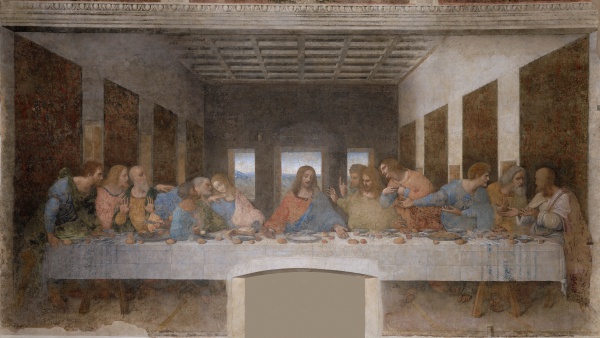Facts About The Last Supper
"The Last Supper" one of Leonardo da Vinci's most renowned works, was created in the late 15th century and resides in Milan, Italy. Commissioned by Ludovico Sforza, the Duke of Milan, this mural captures the dramatic moment detailed in the Gospel of John when Jesus announces that one of his apostles will betray him.
Leonardo began this masterpiece around 1495 and worked on it until 1498. Rather than employing the traditional fresco technique, he chose oil paint, which unfortunately has made the painting more vulnerable to damage over time. Despite numerous restoration efforts, the mural has suffered deterioration from environmental factors and even deliberate harm.
Measuring an impressive 460 cm by 880 cm, "The Last Supper" was part of a larger project to decorate the church as a mausoleum. What is particularly captivating about this painting is how it portrays the apostles' varied reactions to Jesus' revelation, each expressing a range of emotions and interactions. Leonardo's skillful use of composition and perspective ingeniously directs the viewer's focus to Jesus, emphasizing his central role in the scene.
Over the centuries, "The Last Supper" has had a lasting impact on art and culture. It has been referenced, reproduced, and parodied countless times across various media, including Salvador Dalí's "The Sacrament of the Last Supper" Mary Beth Edelson's feminist piece "Some Living American Women Artists / Last Supper" and Andy Warhol's series inspired by the mural.
The painting has also fueled much speculation and numerous theories, especially following the release of "The Da Vinci Code." Some suggest hidden messages or symbols within the artwork, such as the true identity of the figure to Jesus' right or numerical secrets in the composition. However, most art historians regard these theories with considerable skepticism.
Significant restoration efforts have been undertaken to preserve "The Last Supper" with the most extensive project occurring from 1978 to 1999. This restoration aimed to stabilize the mural, undo previous damage, and revive its original colors and tones. When the restored version was unveiled in 1999, it sparked controversy due to noticeable changes in color and some facial features, leading to debates among critics and historians.
Despite these controversies, "The Last Supper" remains a cornerstone of Renaissance art, celebrated for its innovative composition, rich symbolism, and profound historical significance.

 France
France